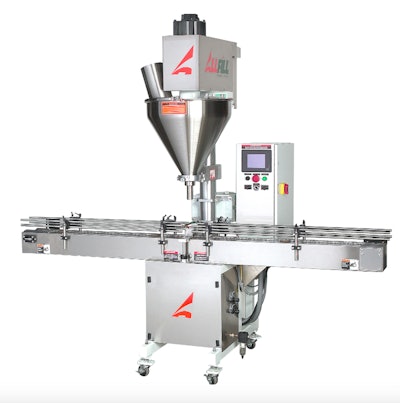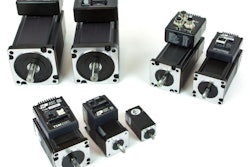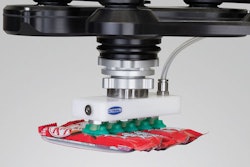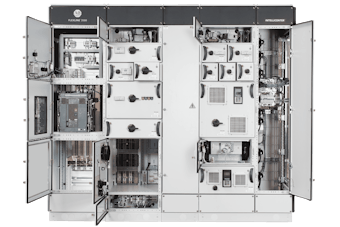
In 1969, Richard Edington established All-Fill to target the dry powder filling market, which had an immediate demand for machines that could adapt to the industry’s evolving needs. By the end of the company’s first year in business, it installed thirteen auger-filling machines in the field. In the early ‘90s, All-Fill moved away from its staple semi-automatic auger filler following the rapid technological changes and introduced its first servomotor auger filling machine, the model B-SV-300. Today, the OEM occupies a 65,000-sq.-ft. facility in Exton, Pa., and has sold more than 17,000 machines, while actively broadening its use of servo technology.
All-Fill continues to create new adaptations of the servo-driven auger filler, including its most recent high-speed rotary models, inline automatic auger fillers, and multiple axis machines.
Meeting new demands
Ha Dinh, All-Fill’s vice president of engineering, saw a need to improve motion control, filling, and weighing accuracy in these servo auger fillers.
“Servos offer a wider range of speed selection, increased reliability, and the ability to define precise acceleration-deceleration profiles for controlled startup and shutdown of auger movement,” Dinh says.
Based on positive experiences in the past, Dinh designated the Yaskawa MP2300Siec controller to help him coordinate all the moving pieces.
“For rotary applications, we use four servo motors and drives, and we try to synchronize them together so they can run as a unit to maximize speed and accuracy. Then, the checkweighers, integrated into the same footprint or as a stand alone unit, can feed back to the Yaskawa controller to adjust the auger speed to maintain accuracy in ever-changing environmental conditions, such as product density,” Dinh says.
Controller provides language inclusivity, flexibility
The Yaskawa MP2300Siec single slot multi-axis controller with an Allen-Bradley ControlLogix PLC improved All-Fill’s motion control and servo capabilities while also providing its customers with a more inclusive platform. The MP2300Siec Machine Controller uses IEC61131-3 and PLCopen programming standards, which offer the choice of five languages (Ladder Diagram/LD, Structured Text/ST, Function Block Diagram/FBD, Sequential Function Charts/SFC and Instruction List/IL).
“The platform gives users the ability to have their own custom function blocks,” says Jay McNeil, Yaskawa’s U.S. east region business development manager. “The FBDs can be standalone, contain all five IEC languages, and/or be part of one of them like a ladder diagram or an SFC program—the language that looks like a flow chart.”
Yaskawa’s use of IEC software resulted from a push from OMAC and larger CPG end users, McNeil says, which prompted the company to also focus more resources into packaging initiatives that better streamline robots, servos, and drives to make them work together from one platform.
“The IEC language provides a nice medium for synergy among devices and lends itself well for creating PackML state models, an OMAC initiative. There are several hundred manufacturers now using IEC software, which means there are more people who can be hired off the street that will understand it,” McNeil says. “Traditionally, in this country, many already know ladder logic, mainly because of it’s ease of use and wide acceptance. Having all five IEC languages at your fingertips is a powerful proposition when considering its flexibility for machine control design.”
The IEC software used in the Yaskawa MP2300Siec controller also makes it easier for All-Fill to expand machine functionality. By itself, the servo amp options provide All-Fill the ability to use controllers from different brands, which appealed to Dinh. 
“But the main reason we chose Yaskawa originally was because their servos could address the wide power range of our augers without a mounting change,” Dinh says. “So customers with older auger models can now refurbish or upgrade the power of their filler machines more easily as their production requirements change. This has been a great cost savings for our customers and helps us achieve our ultimate goal of surpassing their expectations.”
An opportunity to add more axes
The MPiec platforms can run up to 62 axes of servos, and McNeil says Yaskawa works with All-Fill to add additional options to the platform when a customer wants to increase throughput to match demand.
“More than 60 percent of our year-to-year sales are from repeat orders,” Dinh says. “Some of our customers start out with a slower machine that only does 80 units per minute. The next year, they say, ‘Okay, our demands are higher.’ So they need to do 160 cans per minute. Obviously, we have to upgrade our equipment to increase the speed and meet the requirements, but it’s a capability we have now.”



















